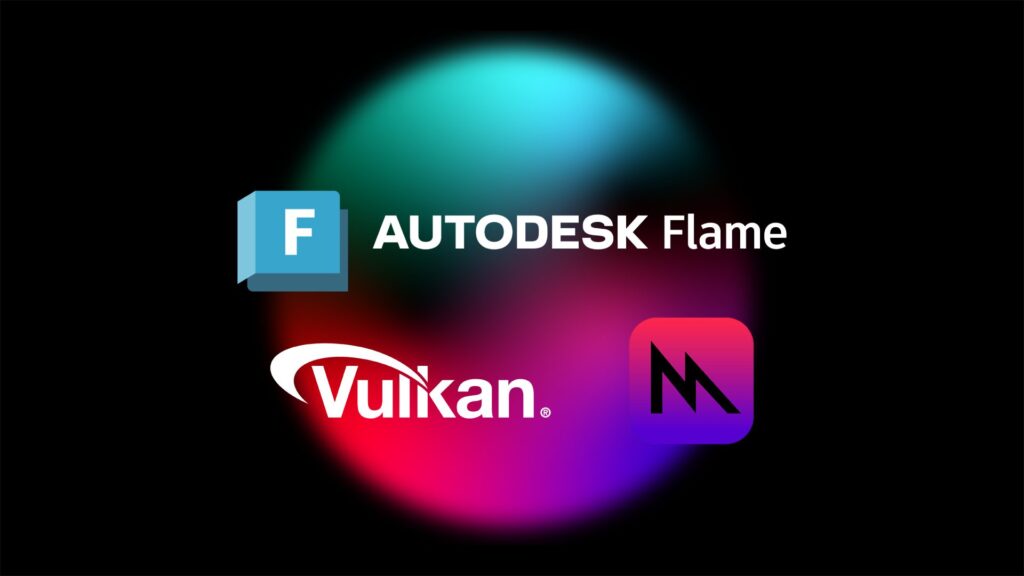With the rise of increasingly complex projects, VFX studios need to iterate faster, increase efficiency, and reduce friction in their pipeline to meet industry demands. By leveraging next-generation graphics technology, artists can run their applications with increased performance to meet their deadlines.
In the latest update, Autodesk Flame Family moves to next generation graphics frameworks for both Rocky Linux and macOS to improve studios’ production pipeline performance, on-premise and in the cloud.
Moving to a modern graphics architecture
Flame 2024.1 introduces significant changes to the VFX and finishing tool’s graphics architecture. This update marks an exciting shift from OpenGL to Vulkan and Metal frameworks for Rocky Linux and macOS platforms, unlocking advanced graphics and compute capabilities for artists.
“Flame artists around the world want speed when working on demanding projects”, says Stephane Labrie, senior product owner at Autodesk. “When combined with new workstation CPUs and faster PCIe buses, as well as the latest generation of NVIDIA GPUs, these new graphics frameworks put artists in the fast lane so that they can push their productivity to the max.”

Faster rendering times and increased interactivity give Flame artists more time to focus on creative work and deliver cutting edge content.
“It was immediately clear that the move to Vulkan brings a significant speed boost”, says Ton Habraken, VFX supervisor at SquarePXL. “Flame already is the fastest and most versatile creative system out there, but this brings things to a whole new level. This is very exciting because every creative process benefits from iterations, and more speed allows for more iterations, thus adding to the creative result. Vulkan should also pave the way for the addition of new and exciting creative tools, and I can’t wait to see what’s in store next.”
This fundamental update brings a more robust and optimized graphics foundation to Flame. It promises further performance and feature enhancements leveraging the power of the GPU for not only Rocky Linux, but Apple users as well. Post-house Republic Editorial experienced significant performance gains with Flame 2024.1 on Apple following the move to Metal.
“We found that most of the work we do renders faster. Some render times are faster by 50%. The interface is snappy and overall, it feels like a huge improvement to the working experience. I know getting Flame up to Metal was a long undertaking and I hope the user base understands this is a huge step for the future of the product”, states Bryan Bayley, senior Flame artist and colorist at Republic Editorial.
Autodesk encourages Flame artists to upgrade to the latest version and share their performance gains with the community in Logik Forums.
Enhancing the core toolset
Additional updates to Flame continue to enhance the solution’s existing tools.
The Metadata Overlay feature added to the Player in Flame 2024 is now available in Batch, Batch FX, and Modular Keyer. The content of the Metadata Overlay can be burned onto an exported clip from the Write File node and Media Export, allowing users to collaborate and exchange key information across wider review workflows. Easier monitoring and tracking of shots help artists centralize conform, timeline, VFX, publishing, color, and delivery in Flame.

The Resize tool receives multiple enhancements, enabling artists to work faster and with more accurate results when resizing and cropping images. New Adaptive and Scaling Presets modes allow users to quickly select a new destination resolution based on the source information and a revamped cropping workflow that does not produce image artifacts.
The latest update also ushers in a slew of user requested improvements, media format and codec updates, as well as Dell Precision 7865 qualification.
For the full list of improvements, visit the Flame 2024.1 release notes. More information and purchasing details are available here.